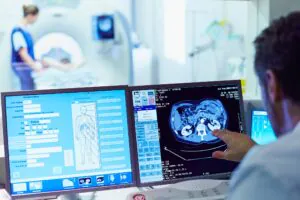Medical technology has progressed leaps and bounds over the last few years with the help of big data, analytics, automation, medical innovation, and real-world evidence. However, a modern-day pharmacy hasn’t changed much over time. Pharmacies are still seen as an outlet to buy drugs mentioned  on the prescription. But the future for pharmacies is set to change for good with developments in medical technology.
on the prescription. But the future for pharmacies is set to change for good with developments in medical technology.
Pharmacies are trying to shift their focus away from a distributor of medicine to providing a broad range of services. In addition to that, they will also act as a consultant and exchange vital data with healthcare professionals and medical manufacturers to facilitate treatment.
Here are some of the possibilities on how medical technology can have an impact on pharmacies:
A Truly Digital Platform
The future of pharmacies like traditional brick and mortar store is gradually shifting to a digital platform. The pharmacies can directly capture the prescription from the doctor and delivered to the patient’s address on time. Not only that, but also it can send reminders to consume medicine on time, and forecast patient medication requirement.
On-Demand Medicine Personalization
Advances in medical technology have given rise to 3-D printers which can be used in creating the medicine on-demand. Such machines are capable of producing the medicine with exact doses with customized components at an affordable price range.
Transition from Drug Distribution to Health Management
Medical technology enables pharmacies to have access to patient data to help in filtering patients and manage their treatments. In addition, pharmacies would also be able to act as an advisor in recommending doses for people taking multiple medicines, advice for minor ailments, and deliver public health services.
Easy Access to Information
An average patient would not know the chemical composition or the properties of the drug being prescribed to them. Even looking at the information in the labels would not help the case. The medical technology has progressed vastly regarding maintaining data, traceability, and information dissemination. This could mean that by scanning a simple code on the label could provide information like place of origin, chemical components, mode of treatment, possible side effects, and recommended dosage on your smartphone.



